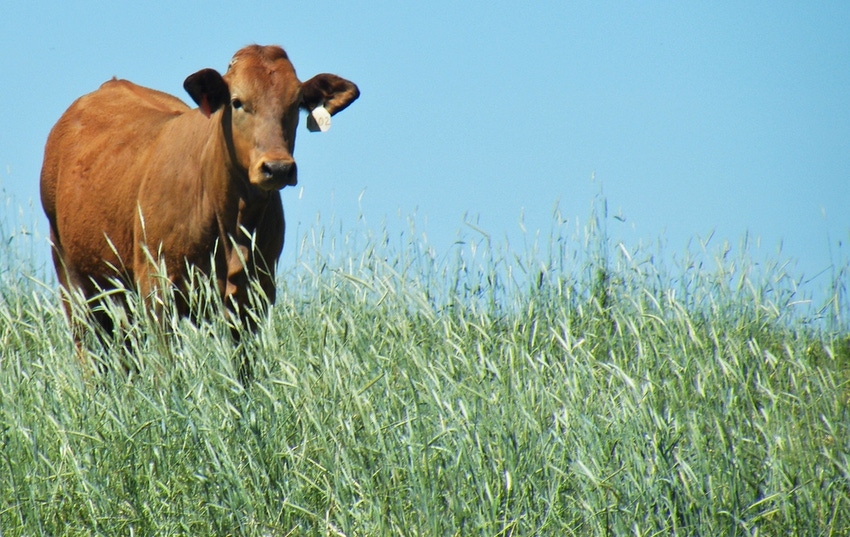Winter forages are a cost-effective way to provide grazing and add pounds to fall-born calves.
September 21, 2017

Planting successful winter forage pastures can reduce supplemental feed costs and boost cow/calf weight gains, according to Texas A&M AgriLife Extension Service experts.
AgriLife Extension forage specialist Dr. Vanessa Corriher-Olson and beef cattle specialist Dr. Jason Banta said following recommended practices regarding winter pastures can improve producers’ bottom line.
Corriher-Olson said producers have several winter forage options for grazing, including annual ryegrasses and small grains, such as oats, wheat and rye. Producers should choose the plant species and variety based on the region, annual rainfall, soil type, production needs and when the forage needs to be available for the herd.
Annual rainfall and soil type in each specific Texas region will be a major factor in deciding which forage will successfully meet grazing needs, she said. For example, annual ryegrasses are historically more popular east of Interstate 35 due to rainfall and because varieties are well adapted to a variety of soil types.
Soil tests and preparing the soil for specific varieties are critical, she said. Drainage -- whether the site drains well or collects water -- will also affect production success.
Corriher-Olson said producers should plant seeds at recommended depths. Annual ryegrass should not be planted deeper than a half-inch. Small grains should be planted at least an inch deep. “Seed depth is critical for germination and ultimately success,” she said.
Proper fertilization will greatly affect production, she said. Nitrogen is important for small grain and ryegrass production. Potassium and phosphorous are important for all forages. “So, be sure to follow soil test recommendations,” she said.
Timing requirements are another important consideration for producers, she said.
“Even though we call them winter forages and there will be some growth in fall and early winter, the majority of growth (in Texas) will be in the spring -- February to April for small grains and February to May for ryegrasses,” she said. “For example, annual ryegrasses provide some production in the fall and early winter, but the months of February through May are when there is a major boost in production.”
Banta said winter forages are a cost-effective way to provide grazing and add pounds to fall-born calves.
“For example, if we figure ryegrass is $15-18 an acre in seed cost and we budget $90 per acre in fertilizer, then our cost per ton of forage produced would be about $25-55,” he said. “Costs will vary depending on forage yield and fertilizer need, but that’s considerably cheaper than hay and most other winter feeding programs.
“If done right, winter forages can eliminate the need for supplemental feeding and provide good protein and energy to cow/calf pairs during critical periods,” he said.
Banta said the decision of how many planted acres producers should provide per cow or cow/calf pair depends on timing. A good guideline to follow is to plant approximately one acre for every two to three spring-calving cows and one acre for each cow/calf pair when calving in the fall, he noted.
Banta said calving schedules are a critical consideration for utilizing planted forages effectively.
Fall-calving pairs can graze full time if the forage allows, he said. If cows are in the last trimester before calving, producers should limit access to winter pasture.
“You’ll want to limit grazing for those cows to two hours a day,” he said. “The reason we want to limit grazing is because there is so much protein and energy in the forages that we could see increased birth weights and potential calving problems.”
You May Also Like
.png?width=300&auto=webp&quality=80&disable=upscale)


